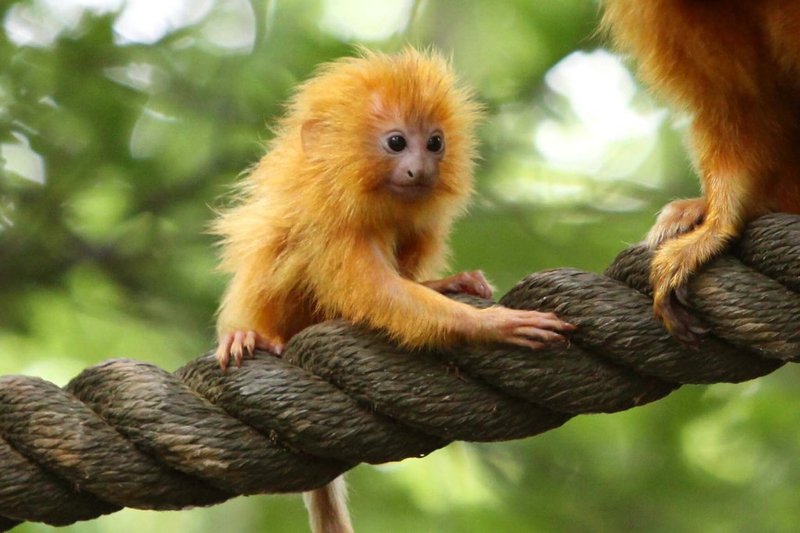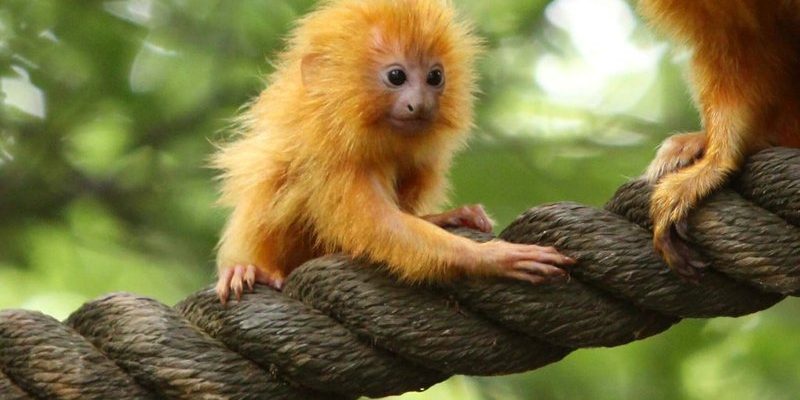
When we think about where tamarins live, it’s important to realize they’re not just one type of monkey. There are several species of tamarins, each with its own preferred living conditions and geographical range. So, let’s dive into the world of tamarins and explore their habitats, why they choose these specific places to live, and how their distribution affects them and the environment they inhabit.
The Tropical Rainforests of South America
Most tamarins thrive in the lush, humid environments of tropical rainforests. Think of these forests as nature’s playgrounds, filled with towering trees, vines, and a plethora of plant life. Tamarins need these vibrant jungles because their diet mainly consists of fruits, insects, and small animals. The ample food supply is crucial for their survival and well-being.
One of the most well-known species, the common marmoset, is often found in the Amazon Basin, where they can climb and leap from tree to tree. This area is like a buffet for them, filled with all the tropical goodies they love. The dense foliage also provides them with cover from predators and a safe place to build their family groups.
Let’s be clear: not all tamarins live in the same parts of the rainforest. For instance, the saddleback tamarin prefers the western Amazon rainforest, while the golden lion tamarin can be found specifically in the Atlantic coastal forests of Brazil. Each species has its unique taste in habitat, which shows how adaptable these little monkeys can be!
The Role of Habitat in Tamarin Survival
The habitat of tamarins isn’t just a backdrop—it’s an essential factor for their survival. Imagine living in a place where food is scarce and safety is minimal; life would be tough! Tamarins have evolved to thrive in their particular habitats, which are rich in resources. They need trees for food, shelter, and to escape from predators.
One interesting aspect of tamarins is their social structure, which is heavily influenced by their habitat. They often live in family groups, working together to find food and protect each other. In areas with plentiful resources, you’ll see larger groups, and this cooperation can be vital for their survival. In contrast, in areas where food is more scarce, these groups may stay smaller to conserve resources and reduce competition.
If you’re wondering how this affects their interaction with the environment, here’s the thing: tamarins play a crucial role in seed dispersal. As they munch on fruits, they help propagate various tree species by spreading seeds. This relationship keeps their habitat healthy and thriving, making them key players in their ecosystem.
Geographical Distribution of Tamarins
Tamarins are predominantly found in Central and South America, but their exact locations vary by species. They’re like nature’s little explorers, with each type adapting to its own unique corner of the world. For example, the lion tamarin is exclusive to Brazil’s Atlantic Forest, while the black-tufted tamarin can be found across parts of Brazil and Bolivia.
This geographical distribution is often influenced by environmental factors like climate, altitude, and human activity. In areas where deforestation is rampant, habitat loss poses a significant threat to tamarins. As trees disappear, so does their food and shelter. This situation highlights the urgency for conservation efforts to protect these incredible animals.
Interestingly, tamarins have shown adaptability. In some areas, they have adjusted to living near human settlements, though this comes with challenges. They often face competition for food and habitat, making their survival even more precarious. You might say they are like urban monkeys trying to navigate city life—resourceful, yes, but also at risk.
Different Species and Their Habitats
Not all tamarins are created equal! Each species has its own preferences regarding habitat, which is tailored to its particular needs. For example:
- Common Marmoset: Often found in the eastern Amazon, they enjoy lowland rainforests and can adapt to a variety of forest types.
- Golden Lion Tamarin: This stunning species is native to the Atlantic coastal forests and is critically endangered mostly due to habitat loss.
- Black-Tufted Tamarin: Found in both Amazon forests and more temperate environments; this species can often adapt to fragmented areas.
Each species reflects the intricate interplay between their environment and their traits. For instance, the golden lion tamarin has adapted to a specific niche, relying on the unique flora of its region. It’s a perfect example of how closely linked species are to their habitats, and how changes can threaten their very existence.
When we look at these differences, it’s clear that conservation efforts must be tailored to each species’ specific habitat needs. Protecting one type of forest might not suffice for another species that requires different resources or conditions.
Human Impact on Tamarin Habitats
As much as we love these playful little monkeys, humans can be a major threat to their habitats. Deforestation, agriculture, and urban expansion take a toll on the lush landscapes where tamarins thrive. Think about it: when a forest is cleared for farming or construction, it’s not just trees that disappear; entire ecosystems are affected.
The wildlife that depends on these forests suffers too. Tamarins lose their homes, and they often struggle to find new places to live. Some species, like the golden lion tamarin, have been pushed to the brink, making conservation efforts critical.
You might wonder, “Why should I care?” Here’s the thing: tamarins are essential for the health of their ecosystems. Their role in seed dispersal helps maintain the plant life that provides oxygen and food for countless other species, including humans. When we protect tamarin habitats, we’re not just saving a cute monkey; we’re also preserving a balanced environment.
Conservation Efforts for Tamarins
The plight of tamarins has prompted numerous conservation efforts, and progress is being made. Organizations are working tirelessly to protect their habitats and raise awareness about the importance of preserving these ecosystems. For instance, the Golden Lion Tamarin Association focuses on habitat restoration, promoting sustainable practices, and educating local communities about the importance of conservation.
You might be surprised to learn that some conservation efforts involve reforestation projects to restore tamarin habitats. These projects aim to plant native trees and create connected forest corridors, allowing tamarins to move freely between areas. Restoring this critical habitat can also help other wildlife thrive.
Additionally, eco-tourism is becoming a crucial part of conservation efforts. By promoting responsible tourism, communities can gain economic benefits while protecting tamarins and their habitats. It’s a win-win situation—people get to enjoy these amazing creatures, and the tamarins receive the protection they need.
Tamarins are not just adorable little monkeys; they are vital components of their ecosystems. Understanding where tamarins live and how their habitats influence their survival helps us connect with these remarkable animals on a deeper level. We’ve explored the vibrant rainforests that nourish them, their geographical distribution, and the challenges they face in today’s world.
As we navigate our relationship with nature, let’s remember that protecting tamarins and their habitats is about balance. By advocating for conservation efforts, supporting responsible tourism, and spreading awareness, we can help ensure that future generations get to appreciate the charm and importance of these amazing creatures. So next time you think of tamarins, remember they’re not just swinging through the trees; they’re also doing their part to keep our world healthy and vibrant.

